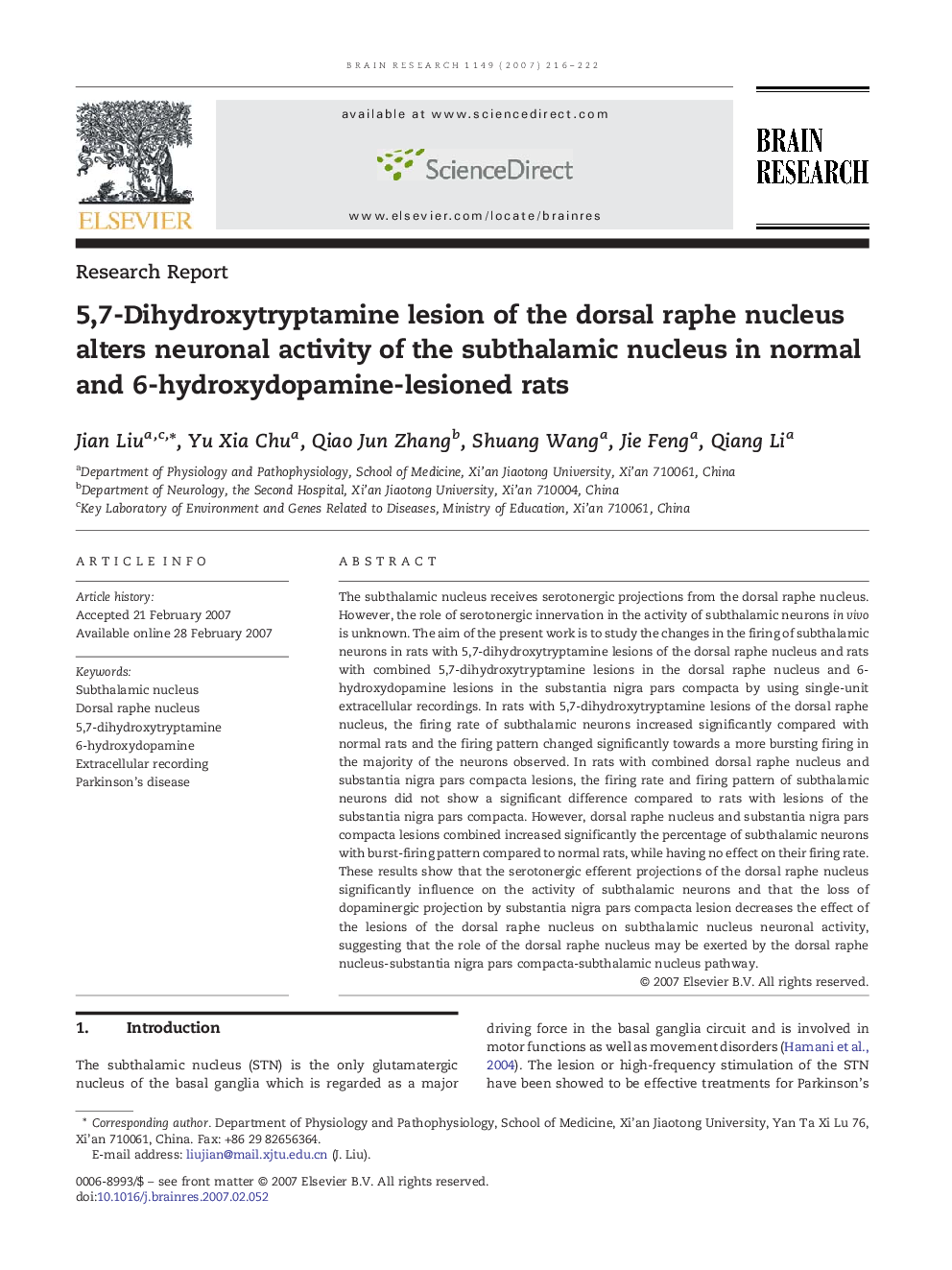| Article ID | Journal | Published Year | Pages | File Type |
|---|---|---|---|---|
| 4331229 | Brain Research | 2007 | 7 Pages |
The subthalamic nucleus receives serotonergic projections from the dorsal raphe nucleus. However, the role of serotonergic innervation in the activity of subthalamic neurons in vivo is unknown. The aim of the present work is to study the changes in the firing of subthalamic neurons in rats with 5,7-dihydroxytryptamine lesions of the dorsal raphe nucleus and rats with combined 5,7-dihydroxytryptamine lesions in the dorsal raphe nucleus and 6-hydroxydopamine lesions in the substantia nigra pars compacta by using single-unit extracellular recordings. In rats with 5,7-dihydroxytryptamine lesions of the dorsal raphe nucleus, the firing rate of subthalamic neurons increased significantly compared with normal rats and the firing pattern changed significantly towards a more bursting firing in the majority of the neurons observed. In rats with combined dorsal raphe nucleus and substantia nigra pars compacta lesions, the firing rate and firing pattern of subthalamic neurons did not show a significant difference compared to rats with lesions of the substantia nigra pars compacta. However, dorsal raphe nucleus and substantia nigra pars compacta lesions combined increased significantly the percentage of subthalamic neurons with burst-firing pattern compared to normal rats, while having no effect on their firing rate. These results show that the serotonergic efferent projections of the dorsal raphe nucleus significantly influence on the activity of subthalamic neurons and that the loss of dopaminergic projection by substantia nigra pars compacta lesion decreases the effect of the lesions of the dorsal raphe nucleus on subthalamic nucleus neuronal activity, suggesting that the role of the dorsal raphe nucleus may be exerted by the dorsal raphe nucleus-substantia nigra pars compacta-subthalamic nucleus pathway.
